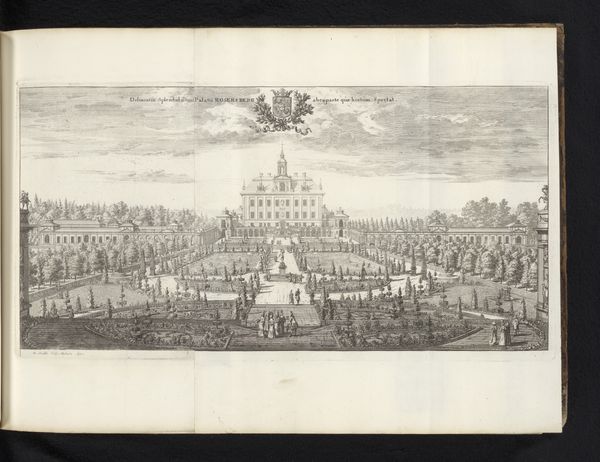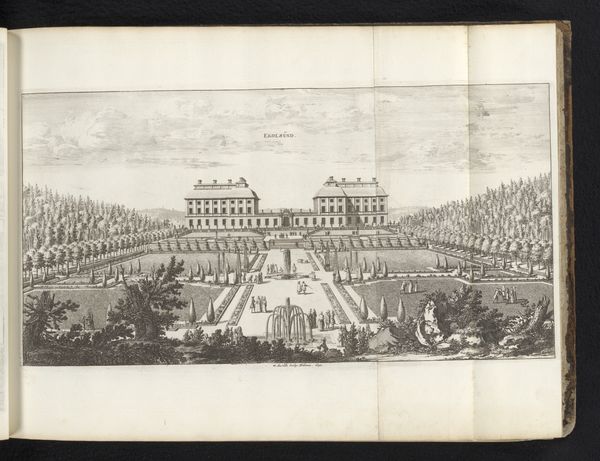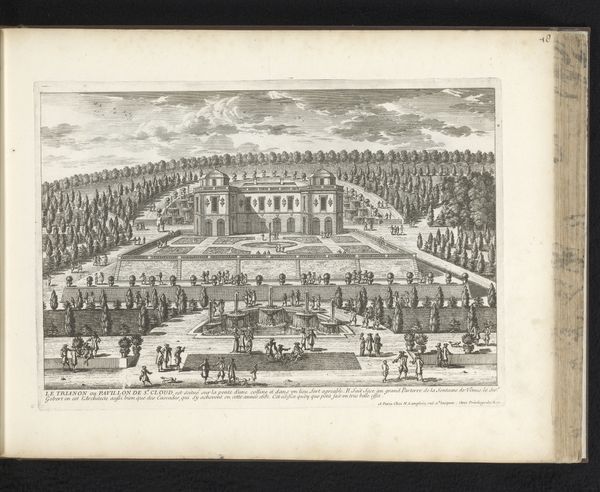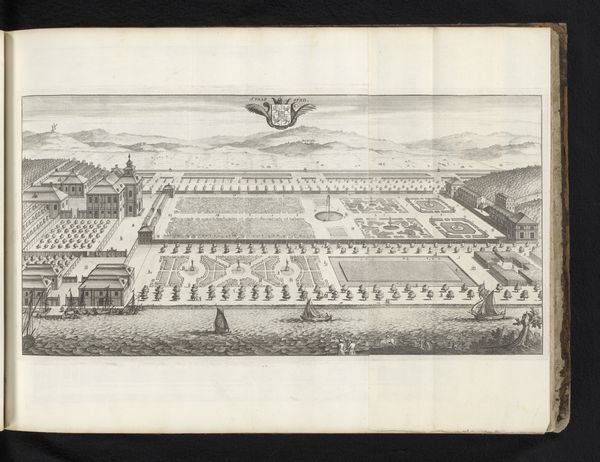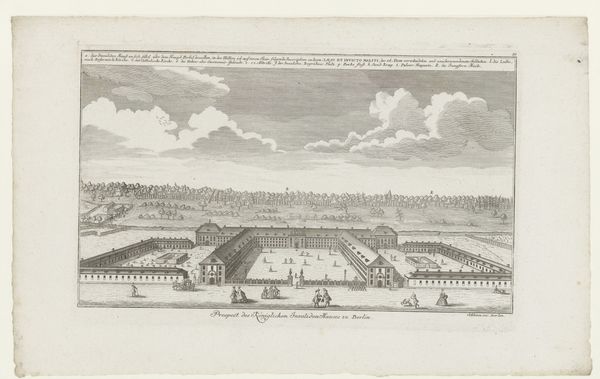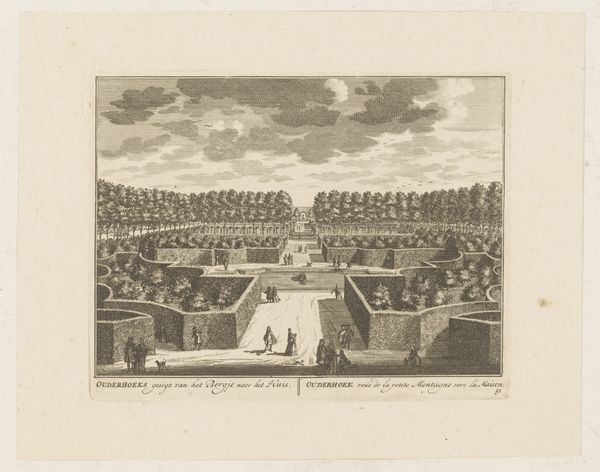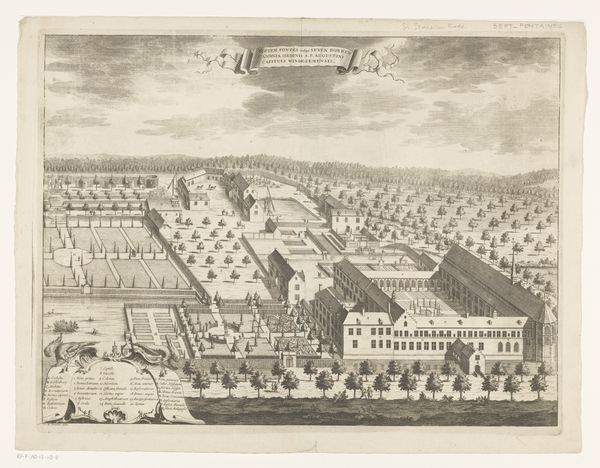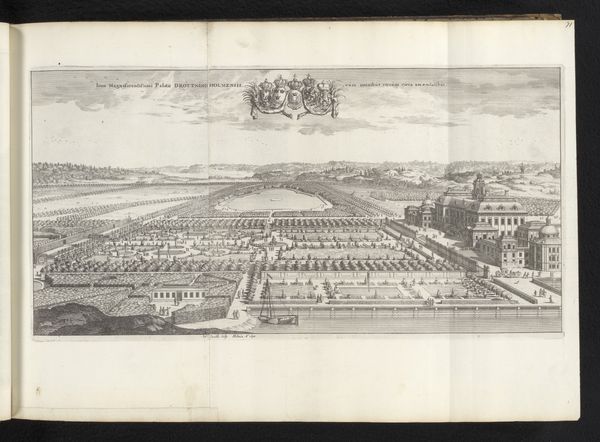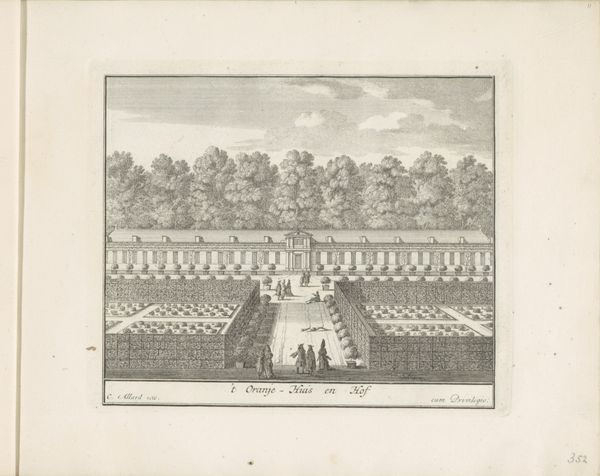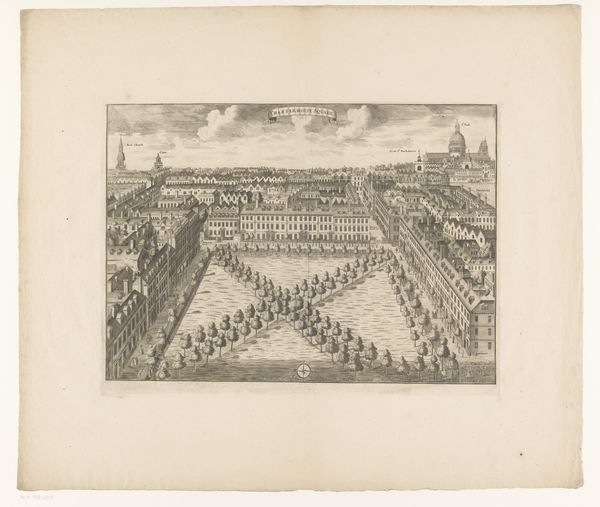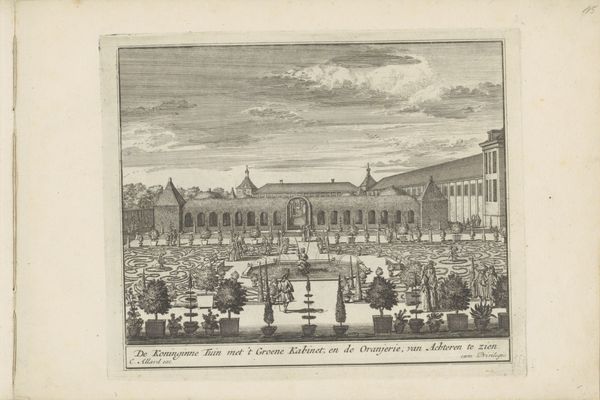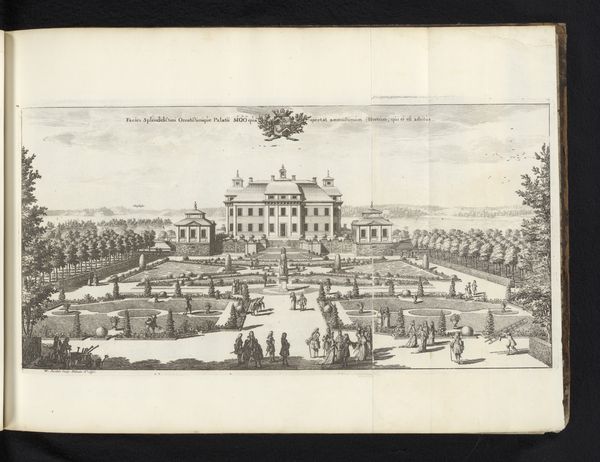
drawing, engraving
#
drawing
#
garden
#
aged paper
#
toned paper
#
baroque
#
sketch book
#
landscape
#
personal sketchbook
#
pen-ink sketch
#
ink colored
#
pen and pencil
#
pen work
#
sketchbook drawing
#
cityscape
#
sketchbook art
#
engraving
Dimensions: height 215 mm, width 420 mm
Copyright: Rijks Museum: Open Domain
Editor: Here we have Willem Swidde’s 1695 drawing, “Uitzicht op de tuin vanuit slot Rosersberg”, made using engraving techniques. It depicts a highly structured baroque garden landscape, but the aged paper gives it such a sense of delicate transience. What stories do you see unfolding in this scene? Curator: This image offers a window into the rigid social hierarchies and control exerted through landscape architecture of the period. Gardens like this were not just pretty spaces; they were statements of power, reflecting a desire to dominate nature, much like the aristocracy dominated society. Do you notice how the perspective emphasizes control, placing the viewer in a position of overseeing, almost surveying, the land and its inhabitants? Editor: Absolutely, there’s definitely an element of surveillance at play, with all the sightlines perfectly manicured and overlooking every possible perspective, with these clear hierarchies between observer and observed... It also looks very artificial in that way. Curator: Precisely. And consider who had access to these spaces. It was largely the elite, reinforcing existing social boundaries. Swidde’s engraving, in a way, immortalizes this power dynamic, documenting it for posterity, while potentially highlighting the artificiality of such constructs through the fragility of the paper it is created upon. How does knowing this context change your perception of the artwork? Editor: I now view the drawing less as a beautiful scene and more as a documentation of societal inequalities and the construction of power. I appreciate it for showing the relationship between art and the social forces shaping its time. Curator: Exactly. By engaging with the artwork’s social context, we start questioning not only what is depicted but *why* and for *whom*. It is not merely a landscape but a record of power.
Comments
No comments
Be the first to comment and join the conversation on the ultimate creative platform.
